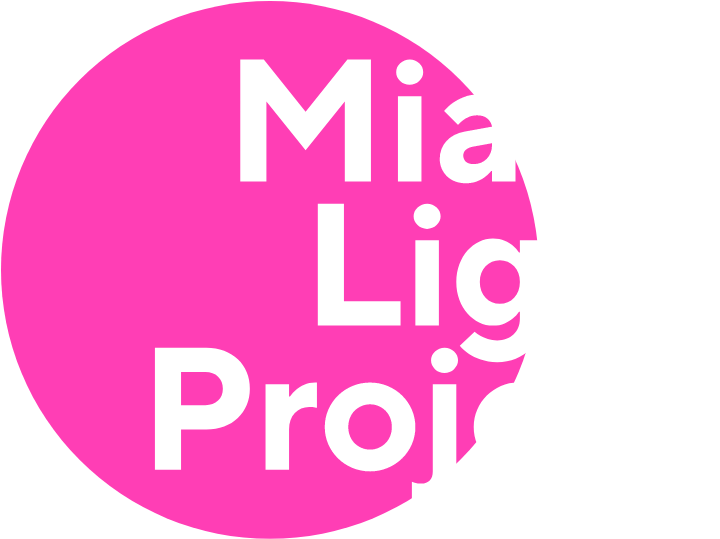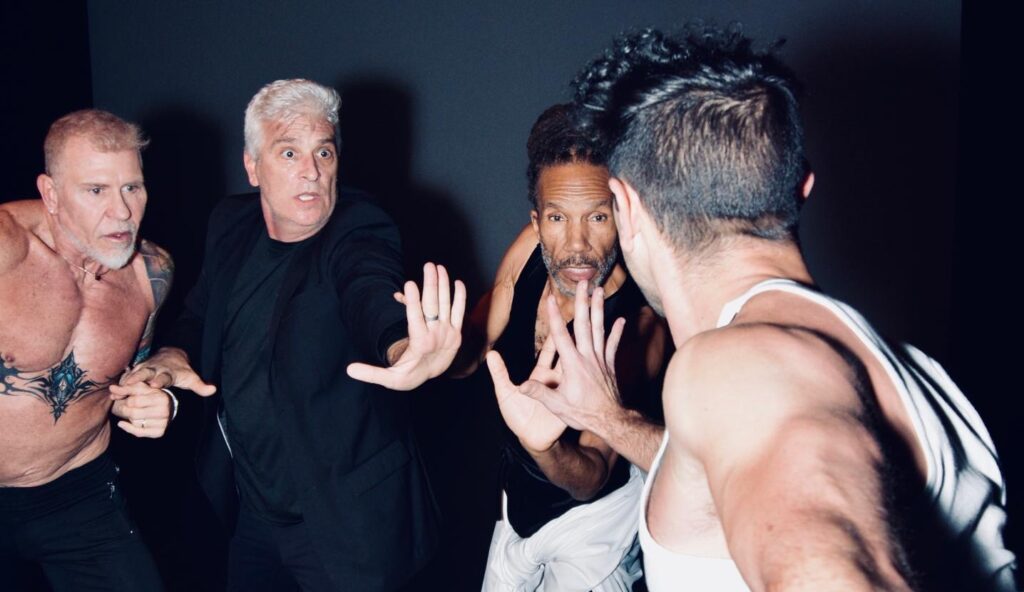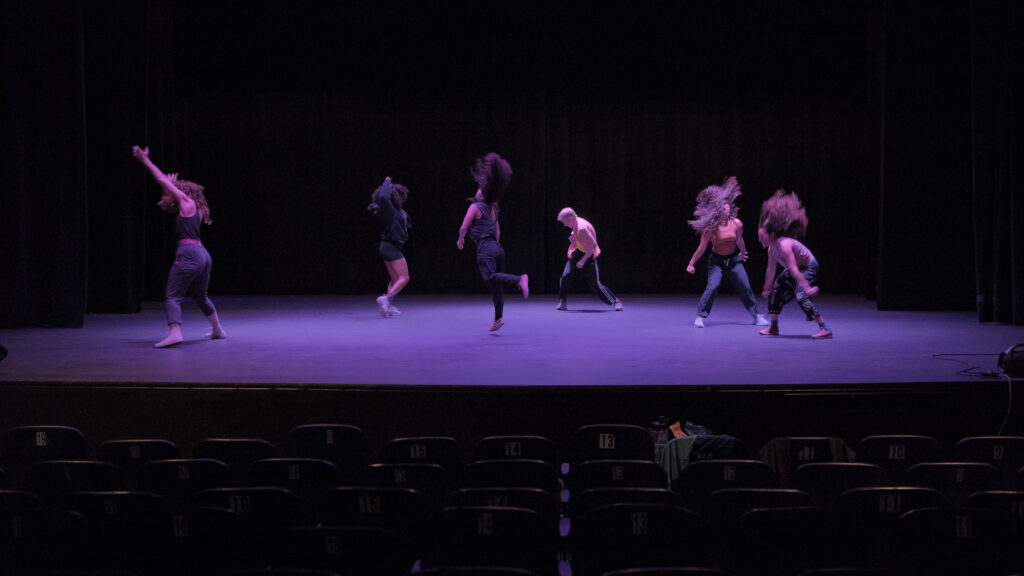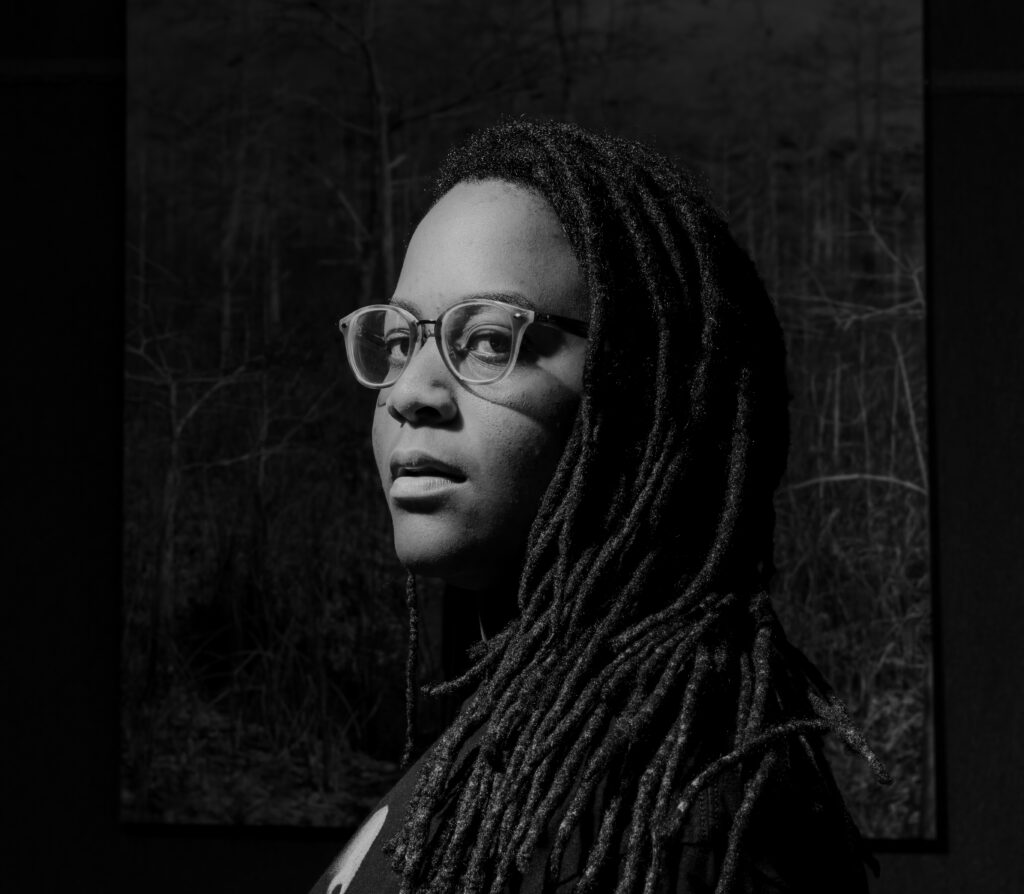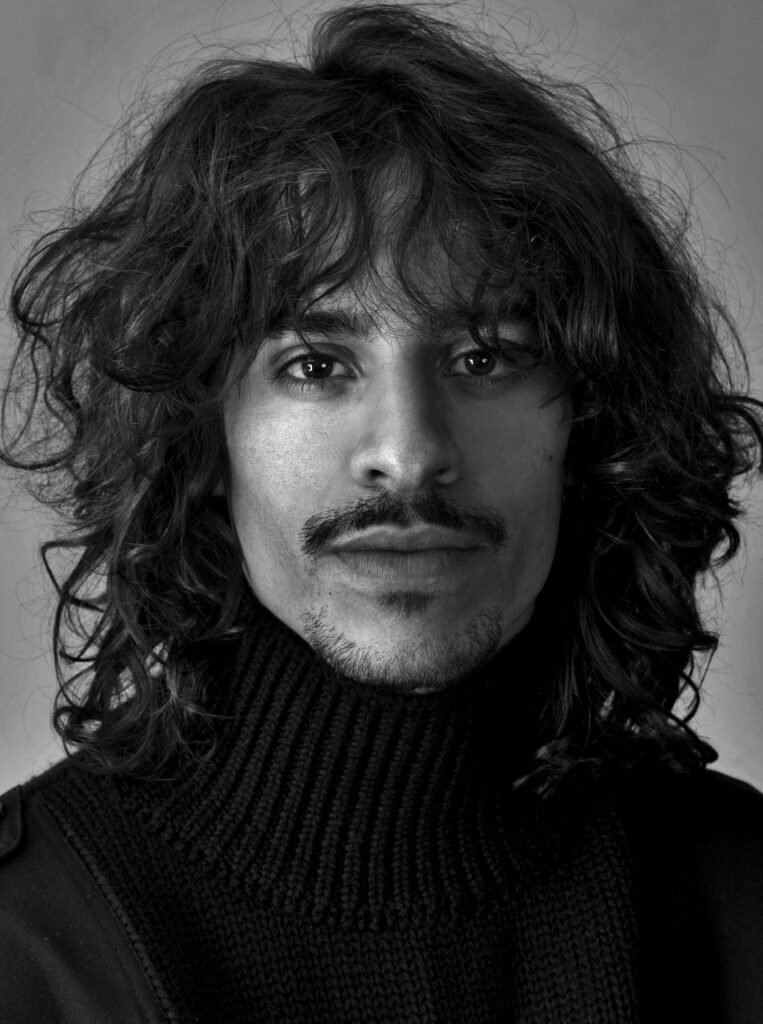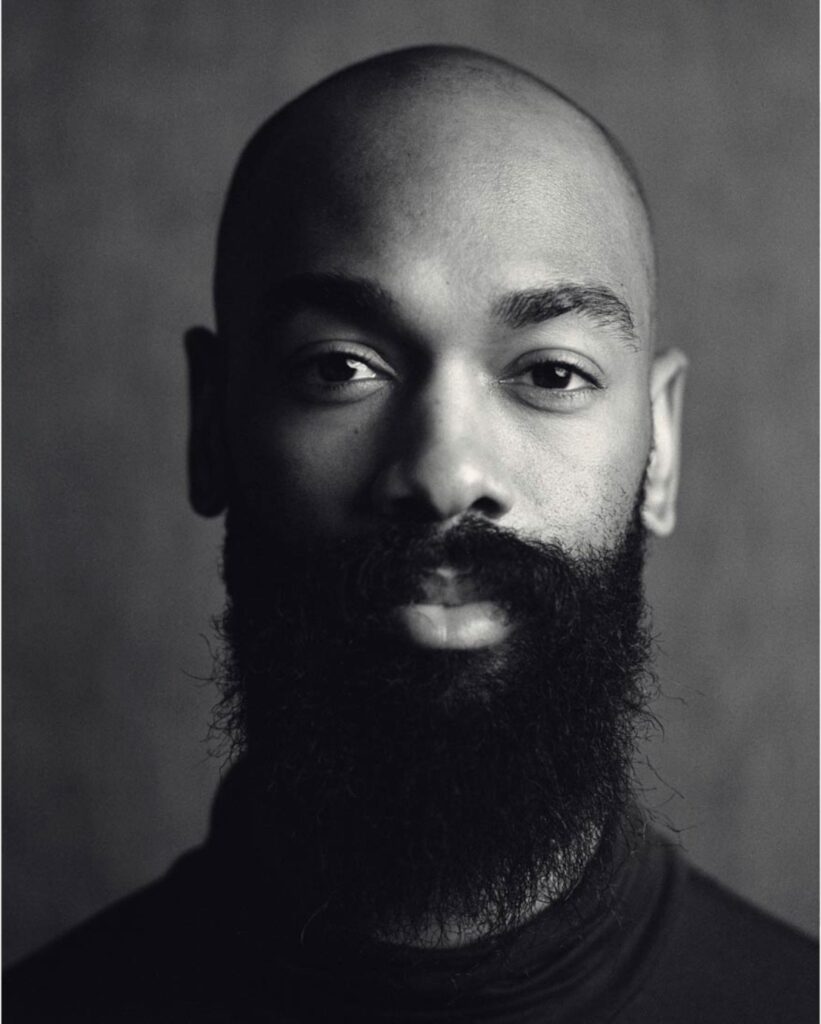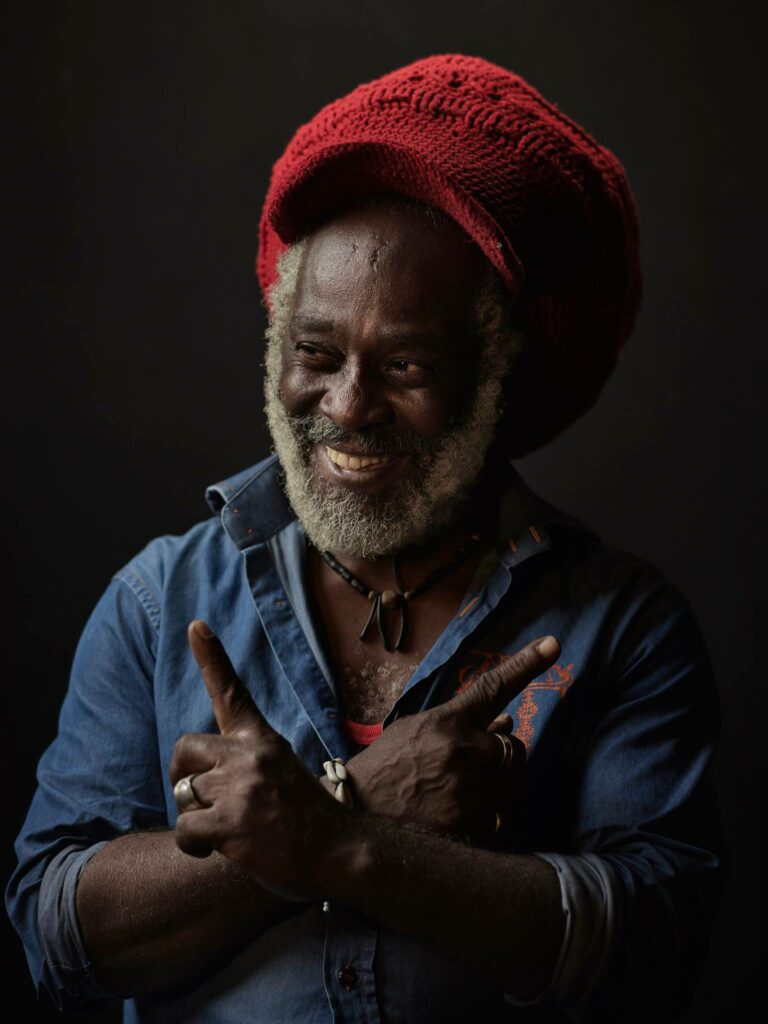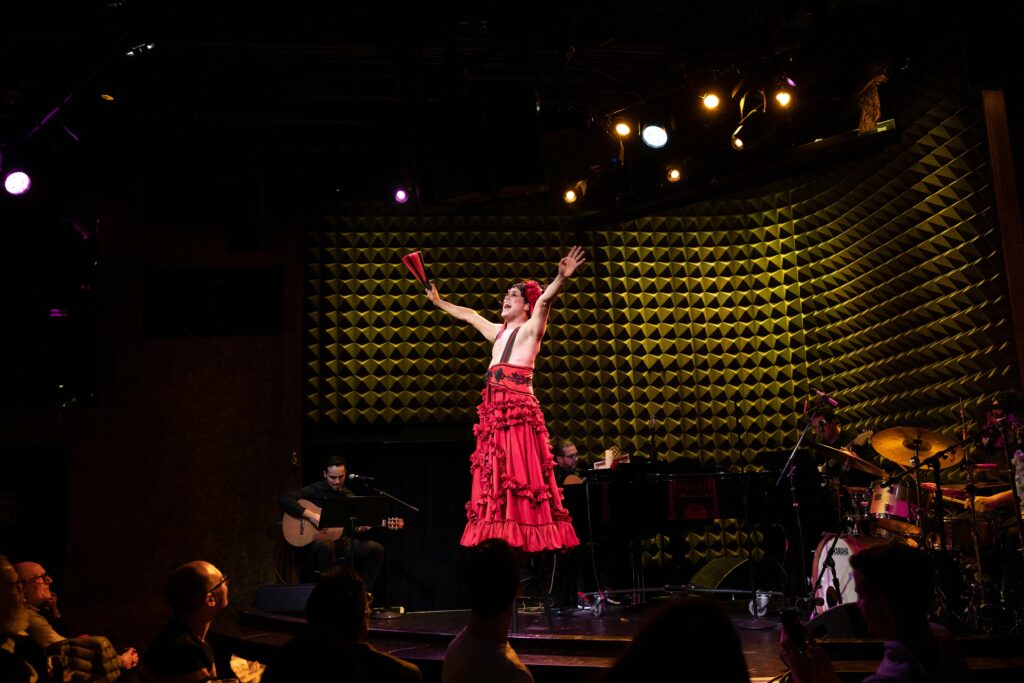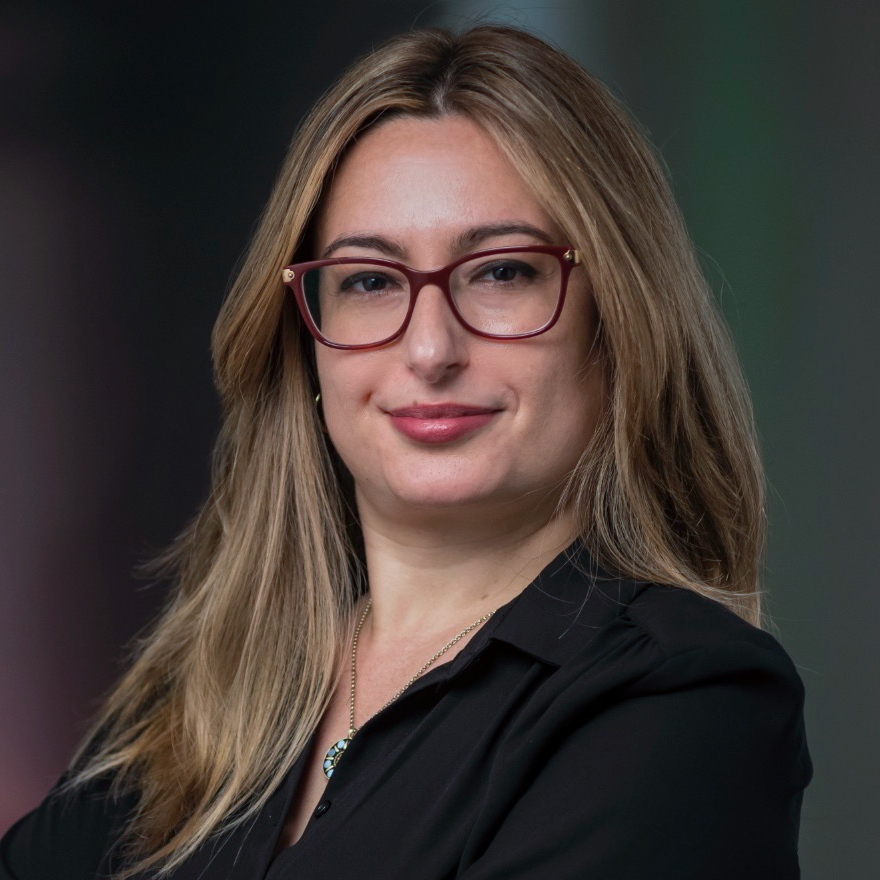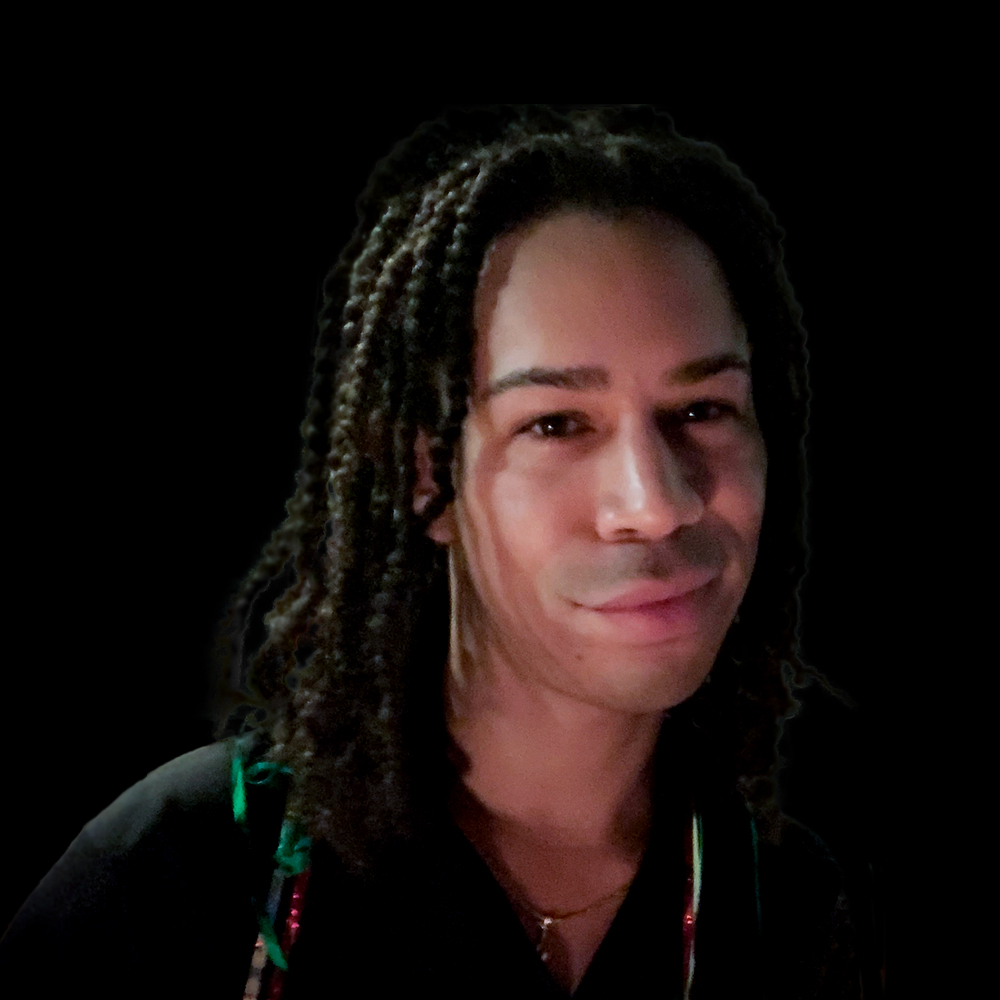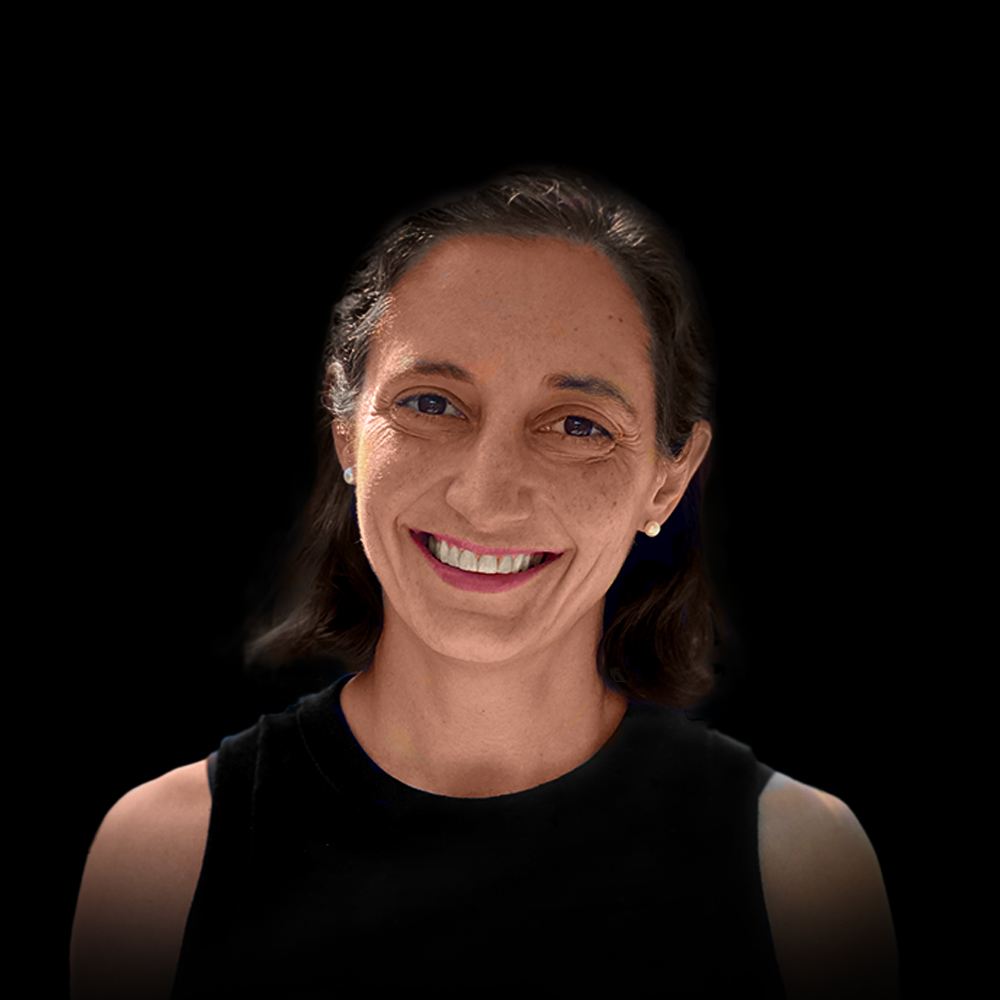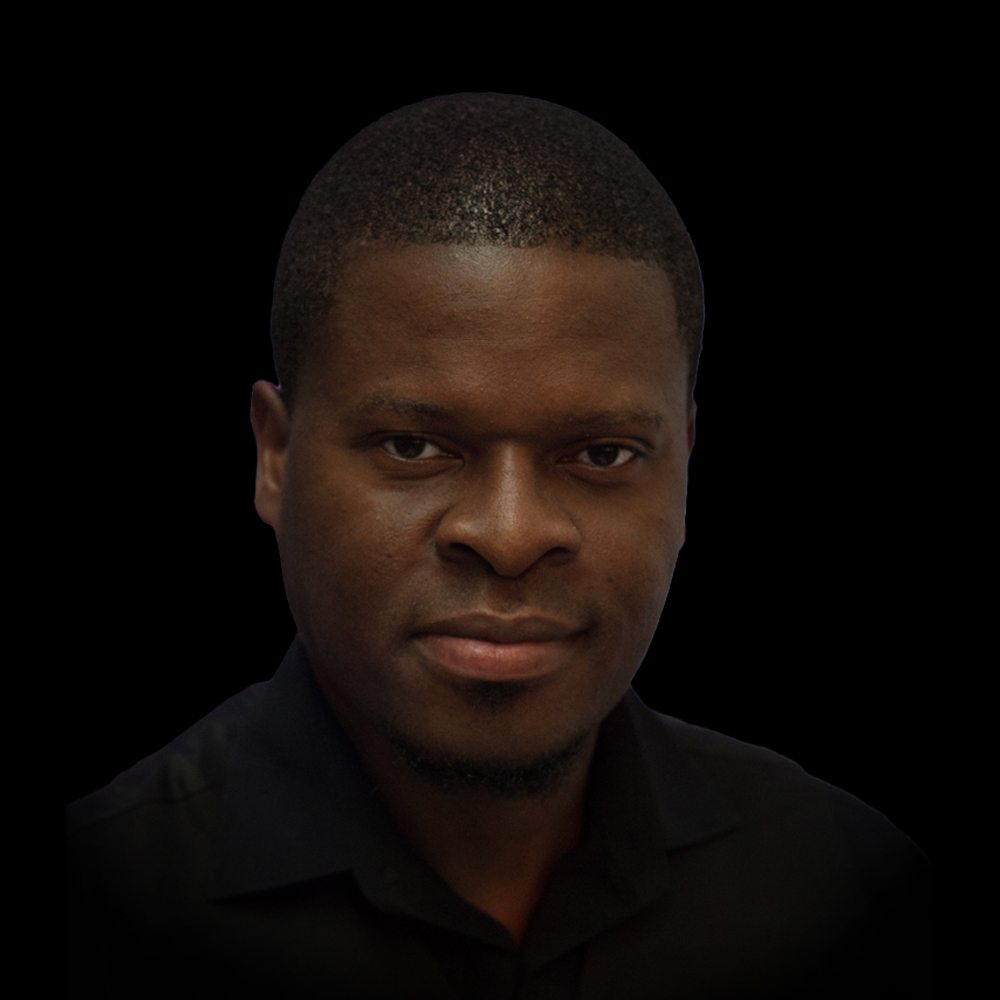History •
Miami Light Project: Telling & Propelling Miami’s Story
October 7, 2020
By Jordan Levin
Share •
So much of a city’s story is revealed in its culture. But artists don’t just reflect what’s happening. They anticipate what’s next, drive change, inspire the next generation. Since it was founded in 1989, Miami Light Project has not only mirrored the evolution of culture in Miami but helped to propel it. From introducing the stars driving a national sea change in contemporary performance; to showcasing LGBTQ voices as the gay community here blossomed; to pioneering presentations of powerful Black artists; to building life-changing connections to Cuban artists and culture.

Crucially, Miami Light Project has made fostering new work that reflects Miami an increasingly central part of its mission, starting with projects by outside artists and moving on to develop homegrown talent through the Here & Now program, commissions, and residencies that have been key to the careers of artists such as Teo Castellanos, Rosie Herrera, Rudi Goblen, and Natasha Tsakos. These artists reveal Miami in its multi-racial, multi-cultural, immigrant-made, future-predictive, constantly re-inventing, often divided, fascinating singularity – to the city itself, and to the rest of the world.
By empowering artists, Miami Light Project has put their creative vision, and the powerful sense of community they create, at the heart of a continually changing Miami.

Beginnings
Miami Light Project was launched in the fall of 1989 by two visionary women: Janine Gross, who’d worked for Miami arts pioneer and Tigertail Productions founder Mary Luft, and arts consultant Caren Rabbino. Their first season featured just four small dance troupes, including the Butoh-inspired Eiko and Koma and new local ensemble Ballet Flamenco La Rosa. But it was an inspired and ambitious effort, coming at the end of a decade which saw the creation of Miami’s foundational cultural institutions, including the New World Symphony, the Miami City Ballet, the Miami Art Museum (now Perez Art Museum Miami), the Miami Book Fair and the Miami Film Festival. (So many groups proclaiming the city in their name!)
Most of these were large organizations working in traditional spheres. Tigertail was the lone presenter of avant-garde work, which, while groundbreaking and vital, appealed mostly to a small, specific audience. As culture took hold here in the 90’s, Miami Light Project offered something new and necessary: a bridge between cutting edge art and mainstream audiences. Gross and Rabbino brought the new national stars of contemporary performance emerging from New York, San Francisco and Los Angeles. In only their second season, in 1990, Miami Light Project presented the Trisha Brown Dance Company, the influential post-modern troupe, on the sands of South Beach – a daring spectacle which drew hundreds of people. It was a magical event, leaping from Miami’s natural beauty to hitherto unimagined possibilities.
The two women continued that excitement with the likes of the Bill T. Jones/Arnie Zane Dance Company (91-92 season), founded by a bi-racial couple who mixed formal experimentation and then-controversial themes, like AIDS (which took Zane in 1988) in the groundbreaking Still/Here; multi-media music/performance art goddess Laurie Anderson (also 91-92). The 1996-97 season featured Marianne Faithfull, Mick Jagger’s 60’s muse turned haunting post-rehab diva. Writer/performers in the emerging genre of solo theater – the inscrutable Spalding Gray (1990-91), the raging Eric Bogosian (1994-95), Roger Guenveur Smith embodying Black leader Huey P. Newton (1995-96), Danny Hoch portraying invisible and immigrant New Yorkers – articulating powerful and previously unheard stories of America, were another consistent presence.
Adventurous dance was a mainstay. Elizabeth Streb’s troupe, the gravity-defying choreographer who sent her dancers thrillingly flying off walls, performed during the 1994-95 season and again in 1998-99. Seattle choreographer Pat Graney, starting her decades-long exploration of the female psyche, and Belgium’s Wim Vendekeybus also came in those early years. The 1998-99 season also featured Philip Glass and Robert Wilson’s Monsters of Grace, a fantastical integration of cutting-edge 3D animation, music and theater from the creators of Einstein on the Beach.
Miami Light Project quickly built a devoted following. Their events made people feel that the adventurous new work driving the arts forward in big sophisticated cities was welcome here. That Miami didn’t just have beaches, nightclubs, hedonism and exotic personality, but culture, too.

Trendsetting
The 90’s saw Miami Light Project pioneer cultural shifts that would transform Miami and the country. In 1992, they debuted Out For Laughs, a gay and lesbian comedy series with a practical inspiration: sell tickets during the sleepy summer season with an inexpensive, stool-and-microphone production that would appeal to the growing gay community centered in South Beach. Practical proved prescient, however, as LGBTQ nightlife, culture, activism and community boomed here. The series (which soon became Come Out Laughing) continued through the 2004-05 season, and showcased nationally prominent gay voices like Tim Miller, Reno, Marga Gomez and Lisa Kron – years before she wrote the barrier-breaking, Tony Award-winning musical Fun Home.
In another LGBTQ first, in 1994 Miami Light Project showcased Pomo Afro Homos (for Post-Modern African-American Homosexuals), a San Francisco trio creating witty, probingly personal comedy on the prejudices and pressures that came with being Black and gay – long before those issues, and Black Queer artists, became a national presence.
That year also marked the start of MLP’s long relationship with hip-hop culture, with a groundbreaking show and residency by GhettOriginal, a hip-hop dance troupe headed by the leaders (including Crazy Legs and Popmaster Fabel Pabon) of B-Boy pioneers Rock Steady Crew, the Bronx-bred break dance originators who wowed the world when hip-hop first blew up in the early 80’s. GhettoOriginal were the first to proclaim B-Boying a legitimate dance genre on a par with modern or jazz. And the underground legends were an inspiration to Miami’s nascent scene. GhettOriginal member Zulu Gremlin moved to Miami soon after, and in 1997 he and Miami B-Boy Ricardo “Speedy Legs” Fernandez launched the B-Boy Masters Pro-Am, which became a major event on an emerging international hip-hop dance circuit.

New Leadership, New Millenium
A new era for Miami Light Project began when Beth Boone became executive director in 1998. A former theater artist who had worked on new theater initiatives at the New York-based AT&T Foundation (then a leading art and culture funder), Boone witnessed the cultural changes beginning to sweep the country, as artists and new leaders began pressing funders and institutions to diversify a mostly white performing arts world. She moved to Miami in 1994, initially working at Florida Grand Opera and then with Olga Garay-English, head of the predecessor to Miami Dade College Live Arts, a visionary leader who championed artists of color and ambitious international cultural exchange with the Caribbean and Latin America, using Miami’s immigrant, multi-cultural character to put the city on an international cultural map. (Garay-English would go on to be the founding program officer for art and culture at the Doris Duke Charitable Foundation and later became the director of the City of Los Angeles Department of Cultural Affairs.)
Those experiences inspired Boone to expand Gross and Rabbino’s vision in ways that would fundamentally re-shape MLP’s identity. She built a deep, multi-faceted relationship with Cuban artists, a politically fraught but culturally vital link to a country central to Miami’s identity. She diversified programming to include more artists of color from the U.S. as well as the African Continent and Asia. Artists and projects that engaged with social issues became another thread. Crucially, Boone made fostering local artists, commissioning new work, and deepening connections to the community a priority for Miami Light Project.
The organization continued to present nationally and internationally known, cutting edge performers of all kinds. But the evolution of deeper programmatic shifts in the new millennium – focusing on Miami-based artists, cultural exchange, artists of color, and hip-hop culture – made Miami Light Project an integral part of Miami’s shift in the new millennium, as the city revealed a unique cultural identity arising from its mix of immigrants and cultures, a place with its own distinctive voice.
“As a cultural organization, our job is to present artists responding to the world around us,” says Boone. “Our programming was forged by a radically changing community.”
Future Aesthetics

MLP presented a powerful and thoughtful artistic response to the forces changing Miami and the artistic world, with two intensive residencies by Keith Antar Mason and his group the Hittite Empire, a Black theater collective staging stories of Black men across the country, from 1998 to 2000. Mason and his group spent weeks in Miami working with artists and community members on stories of their experiences with racism and its multi-generational, traumatic effects as it is passed down from father to son – ideas that, decades later, are still roiling society.
In the early 2000’s MLP began focusing on hip-hop as a cultural force beyond pop music, supported by a Ford Foundation initiative elevating hip-hop culture across the country. MLP hosted the revolutionary hip-hop choreographer Rennie Harris, who pioneered the presentation of hip-hop dance as a multi-dimensional theatrical art form that belonged on the concert stage, presenting his company in 2001 and 2004 in his potent dance theater works Rome and Jewels, a version of Romeo and Juliet that examined the toxic consequences of sexism and male stereotypes, and his monumental Facing Mekka. (Harris continues to make work for his own company and the Alvin Ailey American Dance Theater.)
In 2003, MLP partnered with the Hip Hop Theater Festival (developed by Danny Hoch, with whom MLP had forged a strong relationship) in New York City to create the Miami Hip-Hop Exchange, bringing together music, dance and rap artists from Miami, the U.S. and Latin America in three international, themed gatherings: Cuba, with its defiant underground musical poets, and rap; Mexico, with its great public mural tradition, and graffiti; Brazil, with its acrobatic capoeira dancer/warriors, and B-boying. The Miami Hip-Hop Exchange’s broader purpose was to uplift practitioners as serious contemporary artists, and to celebrate the fifth element of hip-hop culture – knowledge. And to look beyond borders to explore how the communally-rooted, improvisational, collage-based, technologically fluid form of hip-hop integrates with – and is influenced by – national cultures to become a global, futurist art form.
Miami Light Project had started presenting great jazz artists in the mid-90’s, with monumental pianist Keith Jarrett and multi-instrumentalist and experimental composer Don Byron’s klezmer project, continuing with vocalist Cassandra Wilson in 1999, and saxophonist Sonny Rollins in 2006 and again in 2008. Perhaps the most thrilling jazz event came in 2000, when musical and civil rights legend Nina Simone took the stage at downtown’s Olympia Theater in her first Miami appearance since 1972. The concert cost as much as MLP’s entire season at the time. It proved worthwhile when, on Nov. 8, the night after the infamous presidential election when voting and legal chaos in Florida enabled George W. Bush to edge out Al Gore, Simone led the sold out audience in a raucous, rapturous singalong of Mississippi Goddam. She passed away in 2003. In 2020, two decades after Simone’s show, a battle over civil rights is once again colliding with a fraught presidential contest.
Many of the Black artists presented by MLP do work that is challenging on multiple fronts, exploring themes of Black identity, race, and cultural definition, even as they push the boundaries of their artistic form. One of the most outstanding has been the potent choreographer, performer and thinker Nora Chipaumire, from Zimbabwe, whose riveting, provocative, complex pieces explore African and Western identity and culture, colonialism, female self-definition, and patriarchy. MLP, partnering with Miami Dade College, has presented Chipaumire three times, during the 2011-12, 2013-14, and 2016-17 seasons, while also fostering her work with commissioning funds and residencies.
The 2002-03 season brought Salia ni Seydou, a duo from Burkina Faso who combine Western modern dance ideas with traditional African dance forms to create something radically new. They were followed, in a similar vein, by South Africa’s Vincent Mantsoe in 2006-07, and by French-born dance artist Julie Dossavi, who channels her Benin heritage into a blend of contemporary and West African dance, presented at Miami Beach’s city-wide Sleepless Night festival in 2009.
In 2009, for their 20th anniversary season, MLP presented (with the Adrienne Arsht Center for the Performing Arts) Daniel Bernard Roumain (together with Haitian chanteuse Emeline Michel) a Broward-bred Haitian-American composer, violinist, activist and charismatic performer whose acclaimed multi-media musical works fuse his classical music training with pop and hip-hop. Miami Light Project brought DBR back in 2011 to inaugurate The Light Box at Goldman Warehouse with Symphony for the Dance Floor, an exhilarating music and dance piece that brought the audience onstage for an ending celebration. Another monumental performance came from musician/comedian Reggie Watts, whose brilliant, delirious improvisations of music, lyrics and comedy had made him an unexpected rising star on TV comedy and late night shows; both of whose shows, in 2011 and 2013, sold out in hours.

Cuban Connection
The turn of the millennium saw Miami Light Project at the center of a fierce debate over artists and Cuba – which would end by putting the island’s culture at the heart of MLP. In the mid-90’s musicians from Cuba had begun playing Miami, something that threats of violence and social exclusion had previously inhibited, drawing exhilarated crowds of mostly recent exiles. Then a 1999 concert by Cuban super group Los Van Van at the Miami Arena blew up into controversy, climaxing in a protest at the show where enraged right-wing exiles threw rocks and bottles at concertgoers.
Boone had attended Cuban concerts in Miami and seen how central the island’s culture was here, even as national tours of Cuban artists were bypassing the city. But she was prevented from presenting them by Miami-Dade’s Cuba ordinance, which prohibited anyone receiving county arts grants from working with Cuban artists, or even anyone who had worked with someone from Cuba. Frustrated, Boone and Miami Light Project joined four other organizations and promoters (including Van Van promoter Debbie Ohanian and GableStage leader Joe Adler) as the lead plaintiff in an ACLU lawsuit to overturn the ordinance. Heated debates over freedom of speech, political repression, and cultural exchange consumed Miami.
In 2000, the Cuba ordinance was eliminated by a separate Supreme Court case. Boone’s stance earned her a spot on a trip to the island for major U.S. presenters, where she was further captivated by the island’s dynamic culture. The following spring, in 2001, Miami Light Project presented Grupo Vocal Desandann, a Cuban choir made up of descendants of Haitian slaves who had immigrated to Cuba, in a moving musical appeal to cultural unity. A year later, MLP and the Rhythm Foundation co-presented the Muñequitos of Matanzas, the legendary masters of Afro-Cuban rumba, in front of an exuberant full house at the Fillmore Miami Beach. Music lovers outnumbered protestors by more than 100 to 1.
The excitement ended as the Bush administration effectively cut off exchange with the island. But MLP kept the Cuban connection alive by partnering with Fundarte, headed by Cuban emigre Ever Chavez, to launch Global Cuba Fest. The festival, which debuted in 2008, got around political restrictions by celebrating the rich variety of Cuban musical artists from the worldwide diaspora. The first edition featured virtuoso New York-based jazz drummer Dafnis Prieto and Miami timba-fusion band Tiempo Libre and rumberos Los Herederos, playing sunset concerts on the sands of Miami Beach. The following year GCF showcased virtuoso Canada-based rocker Alex Cuba and New York-based jazz artist Yosvany Terry.
Exchange with the island began to open up again after Barack Obama was elected in 2008, enabling Miami Light Project to partner with the Adrienne Arsht Center to bring back the Muñequitos in 2011, as well as rap group Doble Filo and celebrated singer Osdalgia. Global Cuba Fest has twice featured soulful young singers Dayme Arocena and Danay Suarez. The highlight of the 2019 festival was the Miami debut of Cimafunk, Cuba’s electrifying answer to James Brown, at the North Beach Bandshell, co-presented with the Rhythm Foundation.
Miami Light Project’s Cuban programming has extended beyond concerts, becoming a multi-faceted relationship with the country whose culture and people remain integral to Miami. In 2010, MLP co-presented (with Fundarte and the Centro Cultural Español) The Closest Farthest Away, a complex multi-media film/live theater piece created by U.S. and Cuban artists, a story of fractured love that was a metaphor for the longing and divide between Miami and the island.
MLP has taken Miami artists like Andrew Yeomanson (DJ Le Spam), Sammy Figueroa, Teo Castellanos, Rosie Herrera, Ana Mendez, Toto Gonzalez (DJ Mr. Pauer), and filmmakers Randy Valdes and Elvis Suarez to the island to find inspiration, whether in their Cuban roots or the island’s rich culture. MLP has supported the work of choreographer Marianela Boan, founder of the island’s seminal contemporary dance troupe DanzAbierta, and producer/DJ Edgar Gonzalez (aka DJ EdgarO) to build a boundary-crossing artistic practice. They have taken multiple U.S. presenters to Cuba, expanding opportunities in the U.S. for artists there.
As the Trump administration and renewed political tensions have again curtailed exchanges with the island, Miami Light Project’s – and Miami’s – relationship with Cuba is in flux once more. But the effort to put artistic expression above repressive politics remains central to MLP’s philosophy on Cuba, and to their broader mission. “If anyone is going to call out injustice it’s all the artists we know and love,” says Boone.

Here & Now, Commissions, and Mentoring Miami Artists
During the mid-90’s, Miami Light Project and ArtCenter/South Florida (now Oolite) on Lincoln Road began co-presenting Here & Now, a showcase for young dance, performance, and theater artists in short original pieces. At first these were marathons with work that veered wildly from promising to amateur. But in a city where presenters mostly showcased work made elsewhere, the idea of feeding the grass roots, of enabling homegrown artists to create something new, was a powerful one.
Miami Light Project took over Here & Now in 1999, during Boone’s first full season. She reinvented it as a commissioning program designed to nurture local artists, develop significant new work, and elevate those artists onto the national stage. Here & Now became a much smaller, curated initiative, where artists submitted proposals to a panel which evaluated their work, and received significant funding, support and a full, professional production. One impetus for the change was that artists could now rehearse and perform at MLP’s new home, The Light Box at 3000 Biscayne Boulevard. The performance area had a low ceiling and some awkwardly placed pillars. But having a home would prove key to an enterprise that became central to Miami Light Project’s identity: fostering Miami artists in original work that reflected the changing city and projected it nationally and internationally.
Once MLP opened The Light Box at Goldman Warehouse, their capacious current space in Wynwood, they further expanded support for Here & Now artists, with more funding, more time in better rehearsal space, improved lighting and technical production capacity that added a more professional dimension to the pieces. The artists who’ve come through Here & Now over the years are a vital crew, many of them young and from Latino immigrant families, conceptually adventurous, with a distinctively Miami personality. They’ve included Rudi Goblen, Ana Mendez, Ivonne Batanero, Diana Lozano, Liony Garcia, Lazaro Godoy, Hattie Mae Williams, Charo Oquet, Sandra Portal-Andreu, Alexey Taran and Carla Forte, Juraj Kojs, and many others. They’ve collaborated with each other, with other Miami artists, taken their work to other venues in the city and beyond, and infiltrated the city’s culture to make it far richer.
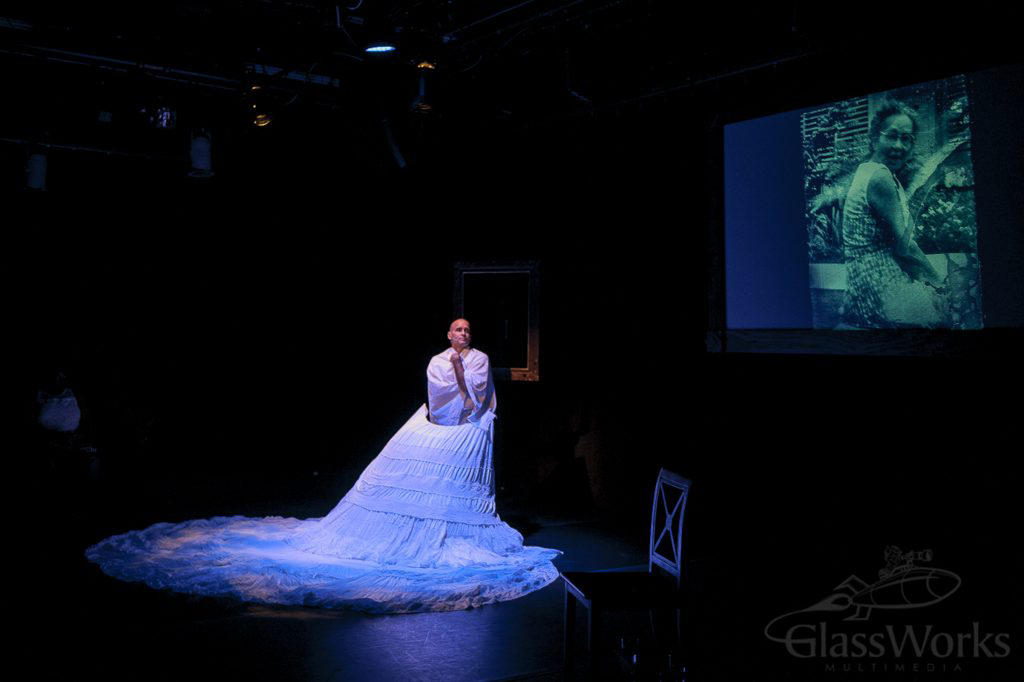
Empowering Miami Voices
Here & Now grew alongside, and together with, another pivotal and ambitious effort launched by Rabbino and Gross in the 1993-94 season – MLP’s first commission, of Radio Mambo: Culture Clash Invades Miami. Created by a trio of L.A.-based, politically inspired Latino comedy/theater artists, it was a knowingly satirical urban portrait based on interviews with locals, the first theatrical portrayal of multi-cultural, modern Miami.
It was followed in 1997 by Drummin’, an ambitious, grandly imagined music and multimedia project conceived by Cuban-born, New York-based composer Tania Leon, which was co-commissioned by MLP, Garay-English at Miami Dade College, the New World Symphony and the University of Arizona. Leon, an Afro-Cuban woman in the overwhelmingly white male field of orchestral music, created a work that merged a cross-cultural ensemble of Cuban, Haitian, and other traditional Latin American percussionists, master musicians only heard at nightclubs and religious ceremonies, with the New World Symphony. To hear this host of Black and Brown drummers producing a thundering wall of polyrhythms at the Lincoln Theater was exhilarating; Drummin’ was a stunning proclamation of the power and legitimacy of African-rooted music from Miami’s immigrant communities. And it came as Cuban music was exploding in popularity in Miami and beyond (the Buena Vista Social Club blew up worldwide in 1997), and as the Rhythm Foundation (another pivotal Miami arts group founded in the 80’s) ignited excitement for world music by showcasing African and Latin American artists. Once again, Miami Light Project was at the crest of changes in Miami culture.
Boone produced MLP’s third major commission in 2001, of L.A. choreographer Heidi Duckler’s Under Eden – an immersive (before that was a buzzword), captivatingly surreal dance theater piece staged at Miami Beach’s magnificently kitsch Eden Roc Hotel, featuring dancers waltzing with vacuum cleaners, a Santeria priest, a mermaid, glamorous elderly ballroom dancers, and other images evoking Miami’s immigrant dreams and tourist fantasies.
But all three of these projects, though offering compelling new visions of Miami, were created by outsiders. That changed in 2002, with Miami Light Project’s first major commission of a Miami artist – Teo Castellanos’s solo show NE 2nd Avenue. Raised in Carol City, a tough, lower and working-class Miami neighborhood, Castellanos had fought his way out of poverty, addiction and dead end jobs to become an actor, director, writer and mentor. He began making original short monologues for Here & Now, prompting Boone to invite him to create a full-length work. It was an inspired move. NE 2nd Avenue proved to be transformative for Castellanos, Miami Light Project, and Miami. Castellanos’s hilarious, insightful writing and tour de force portrayals of only-in-Miami characters – a Spanglish-speaking Puerto Rican in Wynwood, a Cuban balsero – encountered on an imaginary voyage through the city, captured a Miami that had never been seen onstage before. Audiences and critics here and abroad loved it. NE 2nd Avenue, winner of the 2003 Fringe First Award at the Edinburgh International Fringe Festival, announced a distinctive new Miami voice.
Castellanos became an artistic protégé and then a partner to MLP, which continued commissioning him: Scratch & Burn, an incendiary pro-peace hip-hop theater piece for his group Teo Castellanos D-Projects, in 2005; Fat Boy, about poverty and greed, in 2011; and the autobiographical Third Trinity, in 2014. He’s working on another major MLP commissioned project, F/Punk Junkies, slated to premiere in 2022. His influence on Miami has been profound. Castellanos mentored Rudi Goblen, a B-boy who joined Scratch & Burn, training with Teo and becoming a company member, inspiring him to became an impressive theater artist in his own right; as well as Tarell Alvin McCraney (also a D-Projects member), the acclaimed playwright and creator of Moonlight, and countless other young Miami artists – including, most recently, the Iraq War veterans’ devised theater troupe Combat Hippies.
Moreover, Castellanos’s trajectory and initiatives helped create a new model for Miami Light Project in the 2000’s: to provide significant opportunities to artists of color and ongoing support to select talents coming through Here & Now; and putting long-term, sustaining relationships with artists at the center of MLP’s mission.
Goblen, a son of Nicaraguan immigrants, soon began creating his own solo pieces for Here & Now, culminating in the commission of the evening-length P.E.T., an unnerving look at love, in 2013. It helped bring him to the graduate playwriting program (headed by McCraney) at the famed Yale School of Drama. Natasha Tsakos, a brilliantly original multimedia artist, presented pieces at Here & Now in 2004, 2005 and 2006; culminating in the 2007 premiere of the full-length UpWake, an inspired technological and theatrical tour-de-force at the newly opened Adrienne Arsht Center for the Performing Arts (which co-commissioned.) UpWake was a local hit, propelling Tsakos on a successful international career combining technology and art.
In 2009, Here & Now launched Miami’s most distinctive dance artist – Hialeah-raised choreographer Rosie Herrera, with the debut of her dance theater piece Various Stages of Drowning: A Cabaret, whose surreal, unsettling, by turns dark and campy imagery announced another uniquely Miami voice. Drowning launched Herrera on a successful career touring and choreographing around the country. Herrera, however, has stayed connected to Miami Light Project, which has made her an Artist in Residence, commissioning her first solo, Cookie’s Kid, in 2015. MLP was set to present Herrera’s newest work, Make Believe, in the spring of 2020; when the Covid-19 pandemic shut down live performances, they instead commissioned Herrera and resident filmmaker Randy Valdes to create a film of her choreography, Piel Fiel, which is slated to premiere at MLP’s Screendance Miami Festival in January 2021.

A Home of Their Own
Miami Light Project’s evolution has, in many ways, reflected the places from which it has operated – each of which has lasted approximately a decade. From 1989 to 1998 the directors worked from home, and later, from offices on Lincoln Road. When MLP got its own place at 3000 Biscayne Blvd in the spring of 1998 (Boone started work the week they moved in), the stability and working space allowed it to expand Here & Now, and the commissions, residencies, and opportunities it offered to artists and the community. Boone invited director/writer Paul Tei to start Mad Cat Theatre Company, a youthful troupe creating original work, and make its home in MLP’s Biscayne space. Pridelines, an LGBTQ advocacy and support group for teens, was also given a home at the Biscayne Light Box. In 2009, MLP began partnering with pioneering Miami hip-hop artist and producer Seth “Brimstone” Schere to launch PATH (Preserving, Archiving and Teaching Hiphop) an inspirational education program which has reached hundreds of teenagers.
But it has been at The Light Box in Wynwood that Miami Light Project has grown into its current identity – a home for artists. An organization centered on empowering primarily Miami artists to create and grow, a center for community, and a critical, shared resource for culture in Miami.
That move took an enormous commitment and major fundraising. Building The Light Box at Goldman Warehouse, in a raw space in Wynwood, took approximately a year and a half, starting in the spring of 2010. A soft opening, with the Muñequitos de Matanzas presiding over a community blessing, took place in early 2011, and a grand opening celebration with DBR’s Symphony on the Dance Floor that October. MLP’s new home featured a flexible, well-equipped black box theater, rehearsal studios, spacious hallways that double as exhibition (or unconventional performance) spaces, offices for MLP staff and key community organizations, including stalwart partner Arts For Learning, a small recording studio and a bar. The Light Box has vastly expanded what Miami Light Project is able to do.
Artists selected for Here & Now get more time and space to rehearse, and more sophisticated lighting and technical production. That is also true for artists commissioned for more elaborate projects; most of MLP’s major commissions have taken place since they moved into The Light Box in Wynwood. Those have included not only Miami artists, but Nora Chipaumire, Pat Graney (continuing a relationship that started in 1994) and Dan Froot, who in 2016 did a major community arts project, PANG!, with families dealing with gun violence in their daily lives.
In the spring of 2012, during the first full season in The Light Box at Goldman Warehouse, Miami Light Project started the Artist-in-Residence (AIR) program, giving artists extended studio time and resources. At the same time, they started the Technical Fellows Program, to teach professional theater production skills to local young people, who have helped staff Light Box performances and gone on to production jobs at South Florida venues. In 2019, young choreographer Kayla Castellon, who’d received a prestigious Knight Arts Challenge grant, began hosting Show & Talk, an open forum for dancers to try out and discuss their work at The Light Box, adding yet another layer to the creative development fostered by MLP.
With so many artists and projects working and growing at the space, The Light Box has become a vital creative home and community hub for artists – a place to connect, meet someone new, and have encounters that spark fresh possibilities.
The Light Box has also enabled Miami Light Project to connect with the community in new ways and partner with more organizations, widening MLP’s profile and impact while boosting other groups. That includes organizing and hosting more activities with Wynwood area schools, and partnering with arts organizations including O Cinema, the O, Miami Poetry Festival, the Bakehouse Art Complex, and the Copperbridge Foundation. Miami Dade College’s Live Arts program has been a frequent presenting partner. When Tigertail Productions closed in 2018, Miami Light Project took on their ScreenDance Festival of dance films, and expanded it.
Arts for Learning, a leading arts education group which works with Miami-Dade public schools, has been based at The Light Box since it opened. Early on, The M-Ensemble, Florida’s oldest Black theater troupe, was based there for several years. Brimstone’s PATH teen hip-hop academy has grown from a summer to a year-round program. From 2015 to 2019 the Light Box was home to the Nu Deco Ensemble, whose dynamic mix of classical and popular music has made them one of the most charismatic and popular groups to emerge in Miami recently. MLP presented Nu Deco as openers for famed New York avant-garde ensemble Bang On A Can in 2015; and as part of Global Cuba Fest, collaborating with Cuban composer/pianist Dayramir Gonzalez and vocalist Danay Suarez in 2017 and singer-songwriter Yusa in 2019; boundary-crossing musical events which expanded NDE’s cultural reach.
Recent changes make Miami Light Project’s concentration on continuing, longterm initiatives that sustain artists and community – Global Cuba Fest, Screendance, Here & Now, artist residencies – more important than ever. Wynwood has gentrified, going from edgy arts gallery and street mural haven to booming tourist attraction and trendy shopping and nightlife district. MLP and The Light Box are one of the very few remaining cultural organizations in the neighborhood. The Covid-19 pandemic shut down live programming for most of 2020; though MLP plans to start bringing back live events in early 2021, starting with the ScreenDance Festival, the course of the epidemic is still uncertain.
Miami Light Project has continued inventing new ways to support its artistic family. They had resident filmmaker Randy Valdes shoot the 2020 Here & Now artists for an online fall showcase, and he and Herrera created the Piel Fiel project for ScreenDance, at The Light Box. In October 2020, MLP co-presented the dazzlingly innovative theater artist Thaddeus Phillips in a new interactive Zoom performance piece, The Zoo Motel.
As Miami (and the rest of the country) navigates this shifting new era, Miami Light Project will stay centered on artists: as instinctive truth-tellers, who interpret the world and inspire us with unexpected visions that point the way forward. And at a time when joining together to overcome challenges and bridge divisions is more important than ever, Miami Light Project will keep faith in the power of art and culture to create community.
